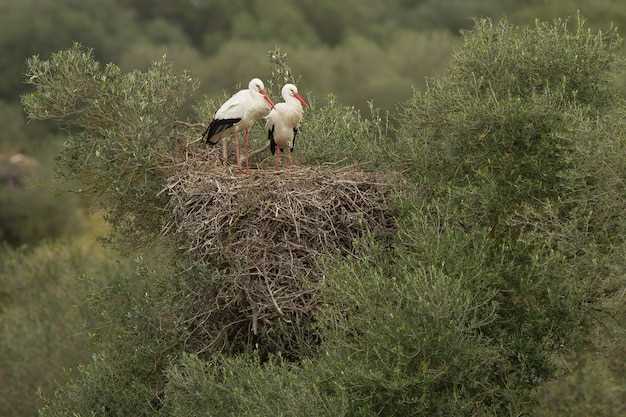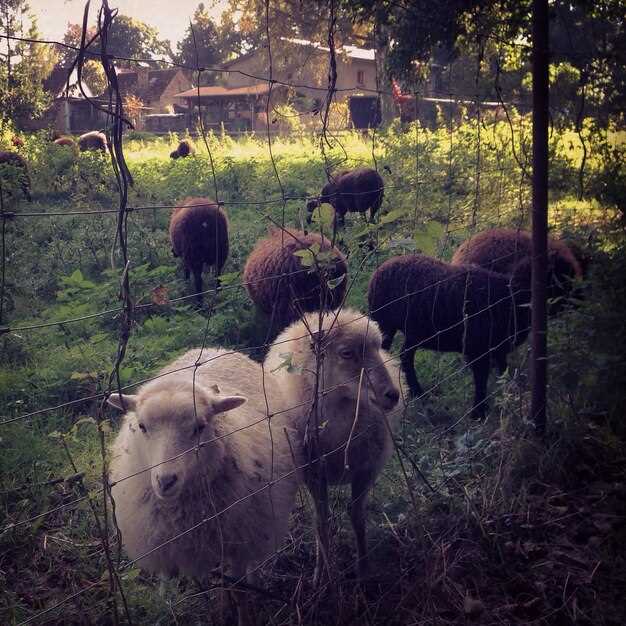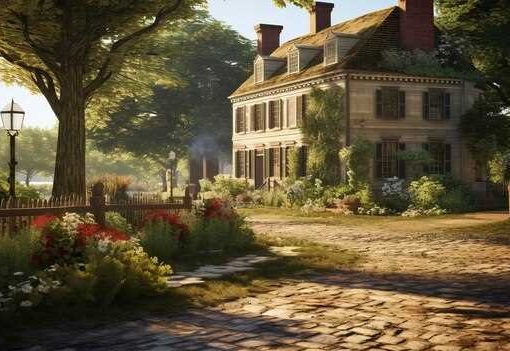Conservation Efforts at Old Down Estate – Protecting Wildlife and Biodiversity


In the heart of the picturesque countryside lies a sanctuary dedicated to the protection and nurturing of the natural world. Nestled within this idyllic landscape, a haven of biodiversity thrives, thanks to the unwavering commitment of the custodians of this remarkable estate. Through their tireless dedication and innovative approaches, they have created a harmonious environment where wildlife flourishes and ecosystems thrive.
At this sanctuary, every effort is made to ensure the preservation of the delicate balance that exists between the diverse species that call this place home. By employing a range of strategies, such as habitat restoration, species reintroduction, and sustainable land management practices, the custodians strive to safeguard the intricate web of life that exists within these grounds.
Through the implementation of these conservation initiatives, the custodians aim to protect and enhance the natural heritage of this estate, allowing future generations to experience the awe-inspiring beauty and wonder of the natural world. By recognizing the intrinsic value of every living organism and the vital role they play in maintaining the health of our planet, they have become stewards of a living tapestry, woven with the threads of countless species, each contributing to the intricate fabric of life.
Restoring Native Habitats: A Key Focus of Conservation Initiatives
Preserving the natural environment and promoting biodiversity are central objectives of the ongoing endeavors at Old Down Estate. A significant aspect of these conservation initiatives involves the restoration of native habitats. By focusing on the revival and enhancement of indigenous ecosystems, the estate aims to create a thriving environment that supports a diverse range of plant and animal species.
Reviving Indigenous Ecosystems
Reviving indigenous ecosystems is a fundamental component of the conservation efforts at Old Down Estate. This entails the reintroduction of native plant species that have historically thrived in the region, as well as the removal of invasive species that pose a threat to the natural balance. By restoring the original flora composition, the estate aims to provide a suitable habitat for indigenous wildlife, enabling them to flourish and contribute to the overall biodiversity of the area.
Enhancing Ecological Connectivity
Another crucial aspect of restoring native habitats is the establishment of ecological connectivity. This involves creating corridors and pathways that allow wildlife to move freely between different habitats, facilitating gene flow and promoting species diversity. By enhancing ecological connectivity, Old Down Estate aims to create a network of interconnected habitats that can support the movement and survival of various species, ultimately contributing to the long-term sustainability of the ecosystem.
In conclusion, the restoration of native habitats is a key focus of the conservation initiatives at Old Down Estate. By reviving indigenous ecosystems and enhancing ecological connectivity, the estate strives to create a harmonious environment that supports a wide array of plant and animal species, fostering biodiversity and ensuring the preservation of the natural heritage for future generations.
Creating Wildlife Corridors: Connecting Fragmented Ecosystems
In the pursuit of preserving the natural world and fostering a thriving environment, the establishment of wildlife corridors plays a crucial role. These corridors serve as vital connections between fragmented ecosystems, enabling the seamless movement of various species and facilitating the exchange of genetic material. By bridging the gaps between habitats, wildlife corridors promote biodiversity and enhance the overall resilience of ecosystems.
Enhancing Connectivity: The creation of wildlife corridors aims to address the challenges posed by habitat fragmentation. As human activities continue to encroach upon natural landscapes, ecosystems become increasingly fragmented, isolating populations of plants and animals. This isolation can lead to reduced genetic diversity, limited access to resources, and increased vulnerability to environmental disturbances. Wildlife corridors act as lifelines, allowing species to move freely and ensuring the continuity of ecological processes.
Restoring Migration Routes: Many species rely on seasonal migrations to fulfill their life cycles, such as birds flying to breeding grounds or large mammals seeking food sources. However, human development often disrupts these natural migration routes, hindering the survival and reproductive success of these species. Wildlife corridors provide a means to restore these crucial pathways, enabling the safe passage of migratory animals and preserving their innate behaviors.
Promoting Genetic Exchange: Genetic diversity is essential for the long-term viability of populations and the adaptation to changing environmental conditions. Fragmented ecosystems limit the opportunities for genetic exchange, leading to inbreeding and reduced genetic variability. Wildlife corridors serve as conduits for genetic flow, allowing individuals from different populations to interbreed and maintain healthy gene pools. This genetic exchange enhances the resilience and adaptability of species, enabling them to better withstand threats such as disease outbreaks or climate change.
Conserving Endangered Species: Wildlife corridors play a crucial role in the conservation of endangered species. By connecting fragmented habitats, these corridors provide endangered species with access to larger areas of suitable habitat, increasing their chances of survival and successful reproduction. Additionally, the establishment of wildlife corridors can facilitate the reintroduction of species into areas where they have been extirpated, promoting their recovery and contributing to overall biodiversity conservation efforts.
In conclusion, the creation of wildlife corridors is a vital conservation strategy that aims to connect fragmented ecosystems, enhance biodiversity, restore migration routes, promote genetic exchange, and conserve endangered species. By ensuring the seamless movement of wildlife, these corridors contribute to the long-term sustainability and resilience of our natural world.
Protecting Endangered Species: A Priority for Old Down Estate
Preserving the existence of vulnerable animal species is a paramount concern for the dedicated team at Old Down Estate. With a steadfast commitment to safeguarding the future of these endangered creatures, the estate has implemented a range of initiatives aimed at their protection and conservation.
Recognizing the critical importance of maintaining biodiversity and the delicate balance of ecosystems, Old Down Estate has made it a top priority to focus on the preservation of endangered species. Through meticulous research and strategic planning, the estate has developed comprehensive strategies to mitigate the threats faced by these vulnerable animals.
By fostering partnerships with local wildlife organizations and experts, Old Down Estate actively collaborates to identify and address the specific needs of endangered species. This collaborative approach ensures that the estate’s conservation efforts are well-informed and effective in safeguarding the habitats and populations of these at-risk animals.
Implementing rigorous monitoring and surveillance systems, Old Down Estate closely tracks the population trends and behaviors of endangered species within its grounds. This data-driven approach enables the estate to adapt its conservation strategies accordingly, ensuring the best possible outcomes for the protection of these vulnerable creatures.
Furthermore, Old Down Estate actively engages in habitat restoration projects, creating safe havens and suitable environments for endangered species to thrive. By restoring and preserving natural habitats, the estate provides essential resources and shelter for these animals, contributing to their overall well-being and long-term survival.
Through education and outreach programs, Old Down Estate aims to raise awareness about the importance of protecting endangered species. By fostering a sense of responsibility and understanding among visitors and the wider community, the estate strives to inspire collective action and support for the conservation of these irreplaceable creatures.
Old Down Estate firmly believes that protecting endangered species is not only a moral obligation but also crucial for maintaining the ecological balance and preserving the rich biodiversity of the region. With unwavering dedication and a comprehensive approach, the estate continues to make significant strides in safeguarding these precious animals for generations to come.
Sustainable Agriculture Practices: Balancing Farming and Conservation
In the realm of land cultivation, it is crucial to strike a harmonious balance between agricultural activities and the preservation of natural resources. This section explores sustainable agriculture practices that aim to minimize the negative impact on the environment while ensuring the long-term viability of farming operations.
1. Crop Rotation
Crop rotation is a fundamental practice that involves growing different crops in a specific sequence on the same piece of land. By alternating crops, farmers can reduce the risk of soil erosion, control pests and diseases, and enhance soil fertility. This method promotes biodiversity and minimizes the need for chemical inputs, thus contributing to a more sustainable agricultural system.
2. Agroforestry

Agroforestry is an innovative approach that combines the cultivation of trees with traditional agricultural practices. By integrating trees into farming systems, farmers can benefit from multiple advantages. Trees provide shade, which helps regulate temperature and reduce water evaporation. They also act as windbreaks, preventing soil erosion and protecting crops. Additionally, trees contribute to carbon sequestration, enhancing the overall sustainability of agricultural operations.
3. Precision Farming
Precision farming utilizes advanced technologies, such as GPS and remote sensing, to optimize agricultural practices. By precisely monitoring and managing factors such as irrigation, fertilization, and pest control, farmers can minimize resource wastage and maximize productivity. This approach reduces the use of water, fertilizers, and pesticides, resulting in a more environmentally friendly and economically efficient farming system.
- 4. Cover Crops
- 5. Integrated Pest Management
- 6. Conservation Tillage
- 7. Water Management Techniques
- 8. Organic Farming
By implementing these sustainable agriculture practices, farmers can strike a delicate balance between productive farming and the conservation of natural resources. These methods not only contribute to the preservation of biodiversity but also ensure the long-term sustainability of agricultural operations, benefiting both the environment and future generations.
Engaging the Local Community: Promoting Conservation Awareness
Creating a sense of shared responsibility and fostering a deeper understanding of the importance of preserving the natural environment are key objectives of the conservation initiatives at Old Down Estate. In order to achieve these goals, engaging the local community plays a vital role in promoting conservation awareness.
1. Community Outreach Programs
One of the primary ways to involve the local community in conservation efforts is through community outreach programs. These programs aim to educate and inform residents about the significance of biodiversity and the role they can play in its protection. Through workshops, seminars, and interactive sessions, community members are encouraged to actively participate in conservation activities.
2. Collaborative Projects

Collaborative projects provide an opportunity for the local community to actively contribute to the conservation efforts. By partnering with local schools, organizations, and businesses, Old Down Estate initiates projects that involve community members in hands-on activities such as habitat restoration, tree planting, and wildlife monitoring. These projects not only enhance conservation awareness but also foster a sense of ownership and pride among the participants.
- Organizing nature walks and guided tours to showcase the rich biodiversity of the estate.
- Establishing community gardens to promote sustainable practices and encourage local residents to grow native plants.
- Hosting environmental awareness campaigns and competitions to engage people of all ages.
- Collaborating with local artists to create public art installations that highlight the importance of conservation.
By actively involving the local community in conservation efforts, Old Down Estate aims to create a lasting impact on the awareness and understanding of the importance of protecting wildlife and biodiversity. Through these initiatives, individuals are empowered to become stewards of the environment and contribute to the long-term sustainability of the estate and its surrounding areas.
Monitoring and Research: Assessing the Impact of Conservation Measures
In order to evaluate the effectiveness of the measures implemented to protect the natural environment and promote biodiversity at the Old Down Estate, a comprehensive monitoring and research program has been established. This program aims to assess the impact of the conservation initiatives undertaken, providing valuable insights into the success of these efforts.
1. Data Collection and Analysis
One of the key components of the monitoring and research program is the collection and analysis of data related to the various aspects of the estate’s ecosystem. This includes gathering information on the population dynamics of different wildlife species, the abundance and distribution of plant species, and the overall health of the ecosystem.
The collected data is meticulously analyzed using advanced statistical methods to identify trends, patterns, and changes over time. This analysis helps in understanding the impact of conservation measures on the biodiversity and wildlife populations present at the Old Down Estate.
2. Habitat Assessment
Another important aspect of the monitoring and research program is the assessment of habitats within the estate. This involves conducting surveys to determine the quality and suitability of different habitats for supporting diverse wildlife species.
Through habitat assessments, researchers can identify areas that require specific conservation interventions or habitat restoration efforts. This information is crucial for developing targeted conservation strategies that aim to enhance the overall biodiversity and ecological balance of the estate.
| Monitoring and Research Activities | Objectives |
|---|---|
| Population surveys | Assess changes in wildlife populations |
| Vegetation surveys | Evaluate plant species diversity and distribution |
| Water quality monitoring | Monitor the health of aquatic ecosystems |
| Camera trapping | Record and study elusive wildlife species |
The monitoring and research program at the Old Down Estate plays a crucial role in providing evidence-based insights into the effectiveness of conservation efforts. By continuously assessing the impact of these measures, the estate can adapt and refine its conservation strategies, ensuring the long-term protection of wildlife and biodiversity.


